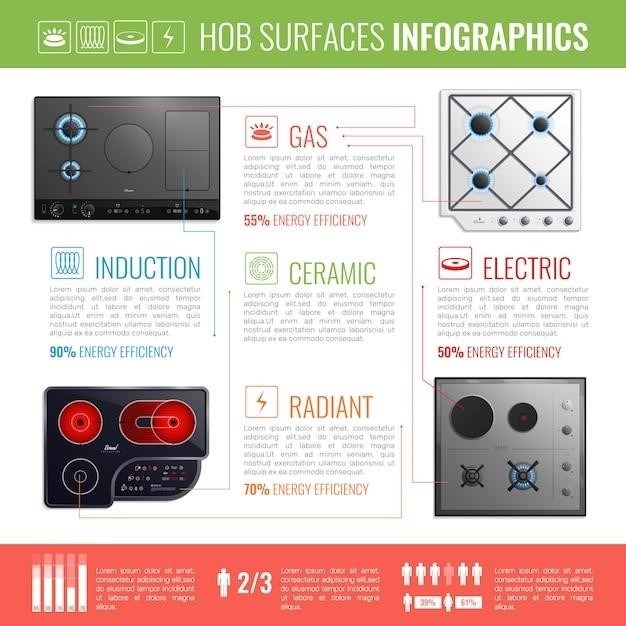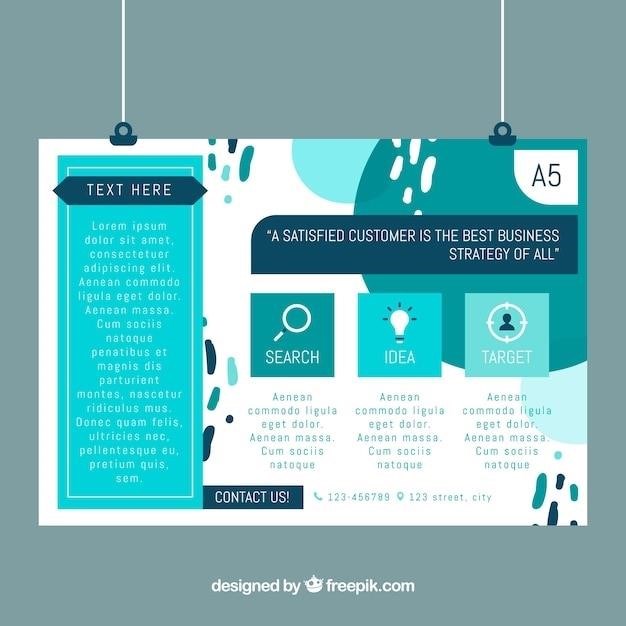
This manual provides comprehensive instructions for using the Samsung UN32EH4003F television. It covers topics such as remote control‚ initial setup‚ troubleshooting‚ picture and sound settings‚ channel management‚ and timer features. This manual aims to guide you through all aspects of operating your Samsung UN32EH4003F and maximizing your viewing experience.
Introduction
Welcome to the world of Samsung televisions! This manual serves as your guide to the Samsung UN32EH4003F‚ a 32-inch television designed to deliver exceptional picture quality and a user-friendly experience. This manual will provide you with detailed instructions on how to set up‚ operate‚ and troubleshoot your new television. From navigating the menus to customizing your viewing preferences‚ this manual covers everything you need to know to get the most out of your Samsung UN32EH4003F.
Remote Control and Accessories
Your Samsung UN32EH4003F comes equipped with a user-friendly remote control and a set of essential accessories. The remote control‚ model AA59-00666A‚ provides intuitive access to all the TV’s features‚ including channel selection‚ volume control‚ menu navigation‚ and more. It requires two AAA batteries (not included). Along with the remote‚ you’ll find a warranty card and safety guide‚ providing important information on product care and usage. The package also includes a wire-holder stand (BN61-05491A) for stable placement. You’ll need to purchase input cables separately for connecting external devices‚ such as DVD players or gaming consoles.
Warranty and Safety Guide
The Samsung UN32EH4003F comes with a warranty card that outlines the terms and conditions of your product coverage. It’s crucial to retain this card for any future warranty claims. The warranty card provides details about the duration of the warranty‚ covered components‚ and any exclusions. Additionally‚ the safety guide included with your TV outlines essential safety precautions for using and maintaining your device. It covers topics like proper ventilation‚ electrical safety‚ and the correct handling of the television to prevent damage or injury. Always refer to the safety guide for detailed instructions and follow its recommendations for safe and responsible use.
Initial Setup and Plug & Play
The Samsung UN32EH4003F features a user-friendly Plug & Play setup process. When you power on the TV for the first time‚ a series of on-screen prompts will guide you through the initial setup. These prompts will walk you through steps like language selection‚ connecting to your Wi-Fi network‚ and setting up your preferred picture and sound settings. The intuitive interface makes the process straightforward‚ even for first-time users. The TV will automatically scan and memorize available channels‚ allowing you to start enjoying your favorite programs quickly; This Plug & Play feature simplifies the initial setup experience‚ enabling you to enjoy your TV without complex configuration steps.
Troubleshooting and Support
This manual includes a troubleshooting section to address common issues you might encounter with your Samsung UN32EH4003F. It provides solutions for problems like no picture‚ no sound‚ or issues with channel reception. For more in-depth troubleshooting assistance‚ you can visit the Samsung website and access their online support resources. The website offers comprehensive troubleshooting guides‚ videos‚ and FAQs to help you resolve any technical difficulties. If you’re unable to find the solution you need online‚ you can contact Samsung’s customer support team directly for personalized assistance. They offer phone and email support options to address any specific issues you might have.
Samsung UN32EH4003F Specifications
The Samsung UN32EH4003F boasts a 31.5-inch display diagonal‚ offering a satisfying viewing experience. With a resolution of 1366 x 768 pixels‚ it delivers clear and sharp images. The television supports graphics resolutions of 1366 x 768‚ ensuring compatibility with various devices; The UN32EH4003F also features video modes designed to enhance picture quality based on the content being viewed. This model incorporates a range of features to optimize your viewing experience‚ making it an excellent choice for everyday entertainment.
Manual Content Summary
This comprehensive manual for the Samsung UN32EH4003F covers a wide range of topics‚ providing detailed instructions and guidance for optimal use. From initial setup and troubleshooting to advanced picture and sound settings‚ you’ll find everything you need to get the most out of your television. The manual also includes information on channel management‚ timer features‚ and fine-tuning for optimal reception. Whether you’re a first-time user or a seasoned viewer‚ this manual will equip you with the knowledge to navigate and enjoy all the features of your Samsung UN32EH4003F.
Channel List and Program Guide
The Samsung UN32EH4003F offers a user-friendly channel list and program guide‚ allowing you to easily navigate and access your favorite channels and programs. The manual provides detailed instructions on how to access and utilize the channel list‚ including options for adding‚ deleting‚ and organizing channels. It also explains how to use the program guide‚ which displays a schedule of upcoming programs for each channel. You can also schedule programs for viewing at a later time‚ making it easier to plan your viewing schedule; The manual also provides guidance on accessing digital program lists‚ which display detailed information about each program‚ including descriptions‚ ratings‚ and cast information.
Picture Settings and Adjustments
The Samsung UN32EH4003F manual provides detailed instructions on how to customize your viewing experience by adjusting various picture settings. These settings allow you to fine-tune the image quality to your preferences‚ ensuring optimal viewing for different content types. The manual covers key picture settings such as brightness‚ contrast‚ sharpness‚ color‚ and tint. It also explains how to use the Digital Noise Filter feature to reduce static and ghosting when receiving a weak signal. You can even adjust the aspect ratio to suit your screen size and content format. For those who enjoy watching movies‚ the manual highlights the Movie picture mode‚ specifically designed for an optimal cinematic experience.
Sound Settings and Adjustments
The Samsung UN32EH4003F manual guides you through optimizing the audio experience with a variety of sound settings. You can adjust the volume‚ balance‚ and treble to suit your listening preferences. The manual highlights the SRS TruSurround HD technology‚ which enhances the sound experience by creating a virtual surround sound effect through the TV’s speakers. This feature is especially useful for enjoying multichannel audio content‚ providing a more immersive experience. The manual also covers the selection of audio tracks‚ allowing you to choose between stereo‚ mono‚ and separate audio program options‚ providing flexibility for different audio preferences and program formats;

Auto Program and Channel Memorization
The Samsung UN32EH4003F manual provides detailed instructions on how to automatically program and memorize channels. This feature simplifies the initial setup by automatically scanning and storing available channels from your chosen signal source‚ whether it’s an antenna or cable. The manual explains how to select the correct signal source (Air or Cable) and follow the on-screen prompts to initiate the channel memorization process. The manual also clarifies that the memorization process can take up to 45 minutes depending on the number of channels available. This process ensures that you have access to all the channels available in your area without manually searching and adding them individually.
Timer and Scheduling Features
The Samsung UN32EH4003F manual guides you through the various timer and scheduling features available on the TV. This includes setting a timer to automatically turn the TV on or off at specific times‚ scheduling specific channels or programs for viewing at a predetermined time‚ and managing a list of scheduled programs. The manual explains how to access the timer settings‚ set the current time accurately‚ and configure the timer and scheduling features for specific channels or programs. You can also customize the scheduling information‚ such as the start date and time‚ and easily view‚ modify‚ or delete scheduled programs using the dedicated channel list screens.
Channel List Management
The Samsung UN32EH4003F manual provides detailed instructions on managing your channel list effectively. It covers how to add or delete channels‚ organize them into favorites‚ and schedule specific programs for viewing. The manual also highlights various channel list screens and their functions‚ including the “Added Channels” list‚ which displays all available channels‚ and the “Favorite Channels” list‚ which allows you to quickly access your preferred programs. The manual further explains how to use the “Tools” menu to manage the channel list‚ including adding or deleting channels from the “Added Channels” list‚ organizing your favorite channels‚ and scheduling programs for viewing.
Fine-tuning and Channel Reception
The Samsung UN32EH4003F manual provides guidance on fine-tuning channels for optimal reception. It explains that while the automatic channel search and store function usually ensures clear reception‚ manual fine-tuning may be necessary if the signal is weak or distorted. The manual outlines the steps involved in fine-tuning a channel‚ emphasizing the use of the “Fine Tune” option within the channel selection menu. It also clarifies that fine-tuned channels are marked with an asterisk next to the channel number for easy identification. Additionally‚ the manual addresses potential issues with channel reception and provides troubleshooting tips for resolving common problems.
Clock and Timer Settings
The Samsung UN32EH4003F manual provides detailed instructions for setting the clock and utilizing the various timer features. It explains how to set the current time using the remote control‚ emphasizing the importance of accurate timekeeping for using the timer functions. The manual then outlines the different timer options available‚ including setting a sleep timer‚ a program timer for automatic channel switching‚ and a reminder timer for specific events. It provides step-by-step instructions for each timer function‚ ensuring users can easily schedule their viewing preferences and set reminders.



























